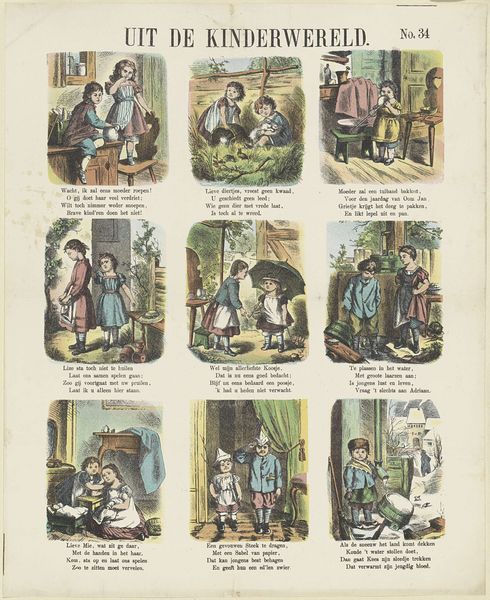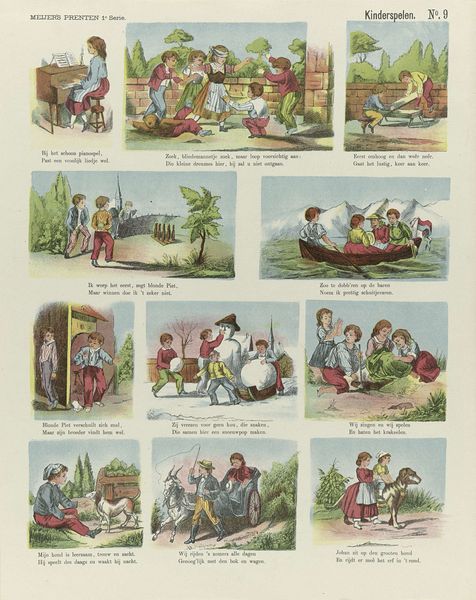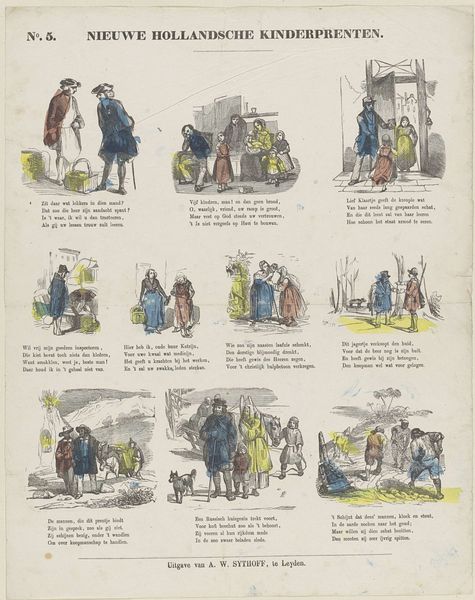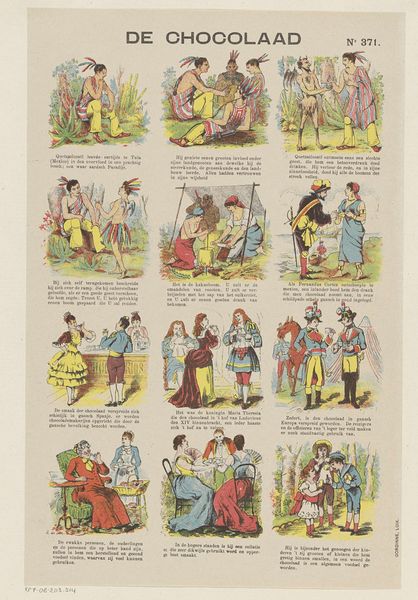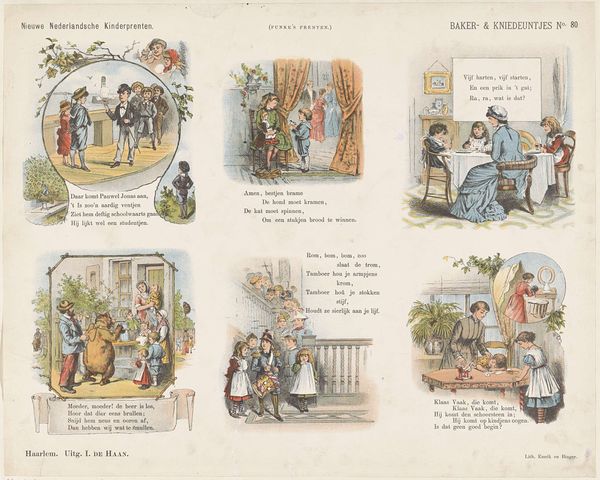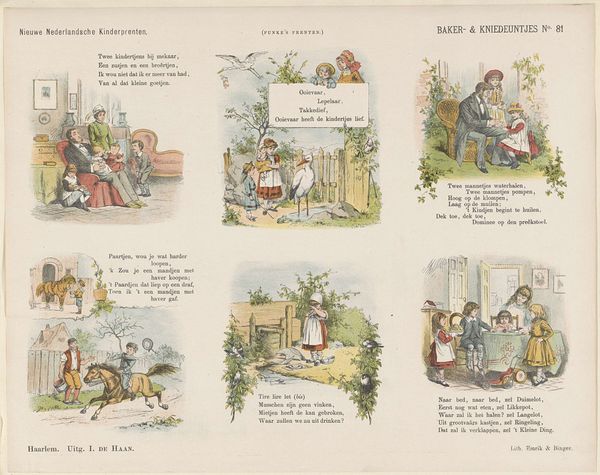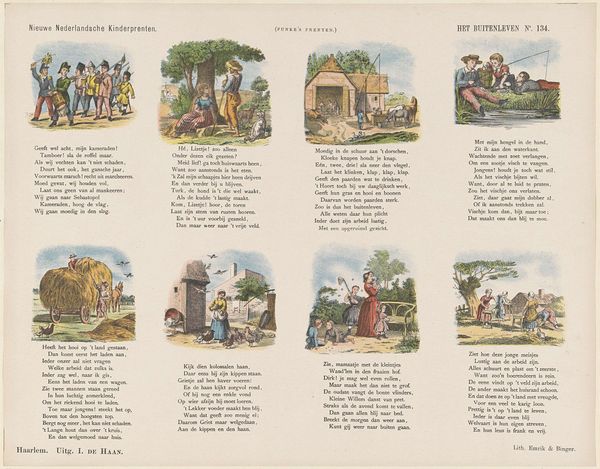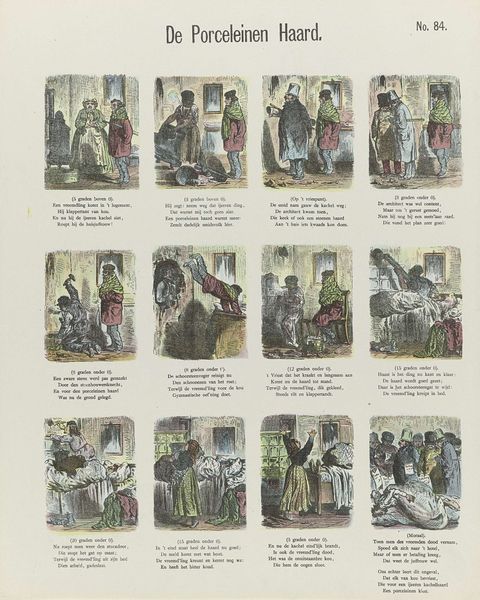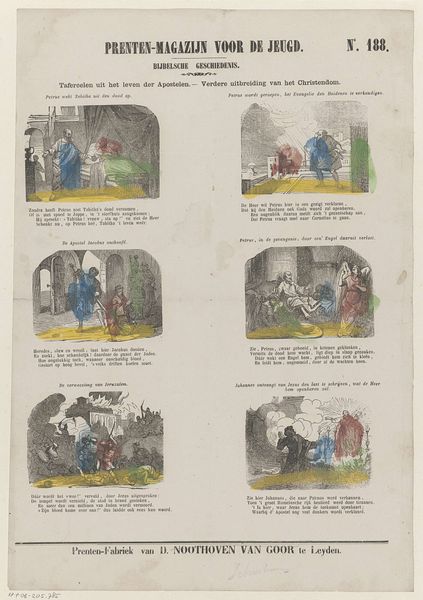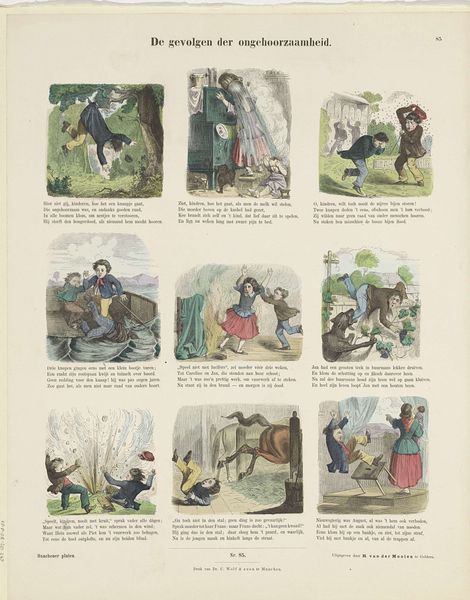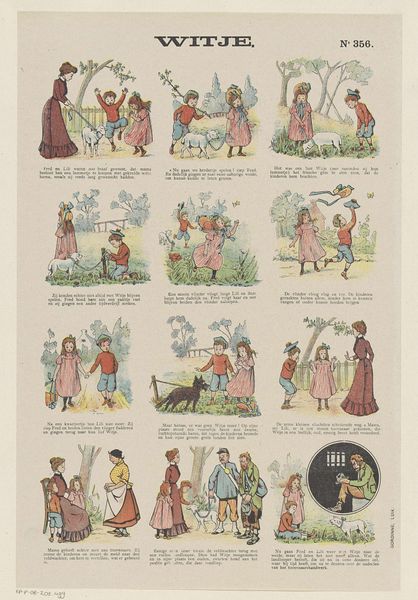
drawing, coloured-pencil, print, paper, pen
#
drawing
#
coloured-pencil
#
water colours
# print
#
paper
#
coloured pencil
#
traditional art medium
#
pen
#
watercolour illustration
#
genre-painting
Dimensions: height 429 mm, width 345 mm
Copyright: Rijks Museum: Open Domain
Curator: Welcome! Today, we’re looking at a print titled "Uit het kinderleven," which translates to "From Children’s Life," created by De Ruyter & Meijer in 1878. Editor: It strikes me as a quaint and charming overview. The entire composition with these small vignettes reminds me of a sampler, doesn't it? Everything seems deliberately placed, capturing little slices of childhood activities. Curator: Indeed! The print presents various scenes from children’s lives – we see them playing, building a snowman, being mischievous. It’s very much in line with the 19th-century genre painting tradition, reflecting an interest in depicting everyday life and the role of children within society. Editor: I notice the color pencil and print mediums used – it feels quite accessible and meant for mass production and consumption. You can almost imagine this hanging in a middle-class family's home as an affordable piece of art. The material choices really underscore its intent to be widespread. Curator: Precisely. Consider the market for such imagery – it reflected emerging attitudes towards childhood. As societal value started centering families, this piece played into the cultural emphasis on children as innocent and deserving of both protection and education. The images are less about grand narratives and more about relatable, domestic moments. Editor: Right. Even the limited use of color draws you to the intimate moments depicted in each scene. Look at the small details—a child with a toy sheep, another with a small stove—it all highlights the tactile nature of children's play, how they interacted with their material world. The paper becomes a lens into their lived experience. Curator: Yes. And the texts accompanying the images likely helped frame moral messages for children. It reinforced certain norms, expectations of conduct, all carefully curated through imagery intended to be both appealing and instructive. Editor: Absolutely. Looking at it now, I see the subtle layers of how labor, material, and message are intertwined here. This isn't just an aesthetic object; it is social engineering presented on a humble piece of printed paper. Curator: Ultimately, this print provides a snapshot of 19th-century attitudes towards children, serving as a potent artifact within broader narratives of social and cultural evolution. Editor: Agreed, viewing this, reminds us that everyday objects often tell richer tales of the past, than the grand historical accounts ever could.
Comments
No comments
Be the first to comment and join the conversation on the ultimate creative platform.
